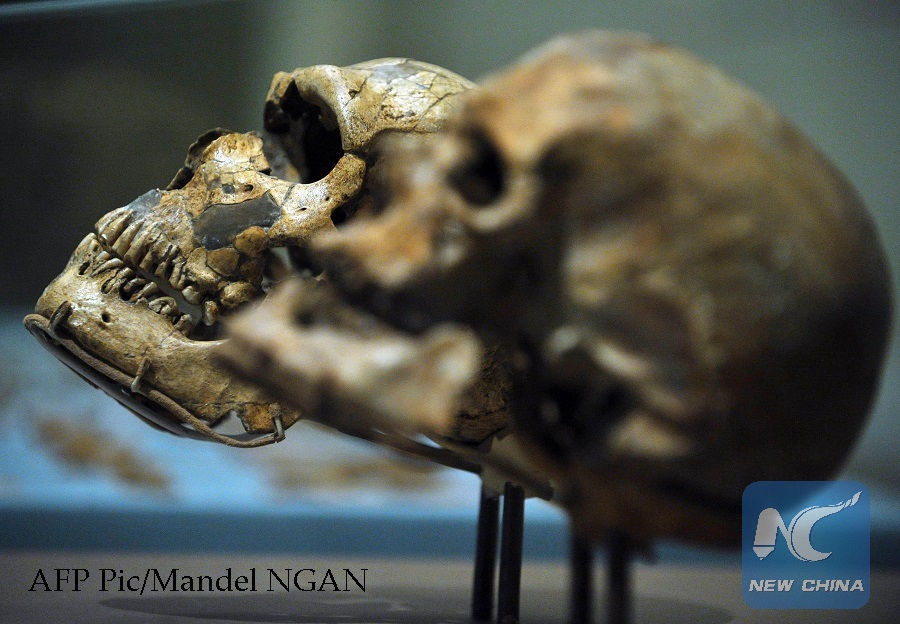
A March 17, 2010 photo shows the skull of the Homo Sapiens (Cro-Magnon 1) (R) from Cro-Magnon, France and the Homo Neanderthalensis (L) (La Ferrassie 1) from La Ferrassie Rock Shelter, France on display at the Smithsonian National Museum of Natural History in Washington, DC. (AFP PHOTO/Mandel NGAN)
ATHENS, July 12 (Xinhua) -- A new study on two fossilized human skulls discovered in southern Greece in the late 1970s could reveal details on the human migration in Eurasia, Greek media reported on Thursday.
A skull dated to more than 210,000 years ago represents the oldest human fossil outside of Africa, according to the researchers.
The skull would become the oldest Homo Sapiens fossil found in Europe.
Another skull dated to more than 170,000 years ago has a Neanderthal-like morphological pattern.
"These results suggest that two human groups were present at the site; an early Homo sapiens population, followed by a Neanderthal population," head researcher Katerina Harvati, a Greek professor of paleoanthropology at the University of Tubingen in Germany explained speaking to AMNA following Wednesday's official announcement.
"Our findings support multiple dispersal of early modern humans out of Africa and highlight the complex demographic processes that characterized human evolution and modern human presence in southeast Europe," Greek media quoted Harvati on Thursday.
The two skulls (named Apidima 1 and 2) were found together in the late 1970s in the Apidima Cave located in the Peloponnese peninsula in southern Greece.
The team from Greece, Germany and Britain virtually reconstructed both skulls, provided detailed comparative descriptions and analyses, and dated them using uranium radiometric methods.
"As a Greek, I wish that research will continue in Greece. I believe our country has much more to contribute to Paleoanthropology science," Harvati said.

